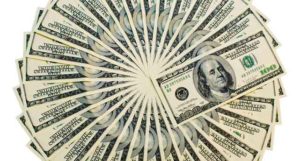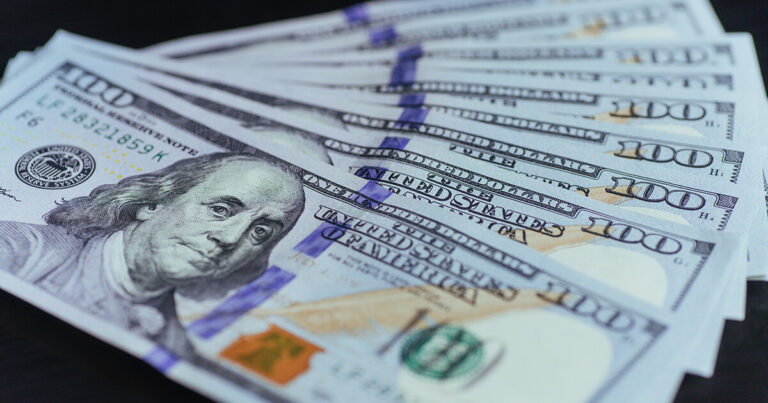The ripple effects of the now global coronavirus pandemic continue to damage the world economies especially G7 currency pairs.
However, some countries have started easing the lockdown measures against the coronavirus.
This has resulted in both positive and negative impacts in the world economies as the manufacturing and service sectors expected to begin their operations.
Other news and events also affected the performance of the G7 currency pairs over the week.
News that affected the G7 Currency pairs
The COVID 19 global pandemic 
The coronavirus world statistics stands at: confirmed cases 3, 485,936 deaths 244,812 recovery 1,124,474
Covid 19 has reduced the global demand for oil negatively.
The oil prices continue dropping, whereas the storage spaces are running out also.
The lockdown measures against the coronavirus have also continued to affect economies of all countries and G7 currency pairs negatively.
Oil prices still very low
Oil is the power source in the manufacturing and transport sector.
The continued drop in oil prices in response to falling demand greatly affected economies that largely produce and export oil.
Also, dealers worldwide are affected by now surplus commodities.
On Friday, the dollar weakened against the G7 currency pairs.
The dollar dropped in the week to trade at below 100. The weakening of the dollar helped crude oil prices to rebound.
Fight against corona
Gilead sciences remdesivir COVID 19 drug responded positively to clinical trials with very high promising results.
According to Gilead Sciences, the drug helped patients to recover quickly, with some of the patients being discharged in less than two weeks.
Even though still under tests, It is the best drug available now to fight the virus.
The US announced that the drug would greatly help in the fight against the COVID 19.
Tests have revealed that the drug reduces the recovery period by up to four days.
The United States revenge against china
In a press conference, the United States of America president, Donald Trump said, “China is a very sophisticated country, and they could have contained it.
They were either unable to, or they choose not to. And the world is suffering greatly”. The US president threatened revenge against china with stringed economic tariffs measures.
The USA move could spark trade wars between the two Giants nations, and this US China trade war result in both positive and negative ripple effect in economies of other countries.
This scenario of trade wars favors safe currency havens like the United States of America dollars and the Japanese yen while having detrimental ripple effects on the riskier currencies like the New Zealand dollar.
G7 Currency pairs review
Table: a summary of the performance of the G7 currency pairs
| Currency pair | 27th April | 3rd May | average | Percentage change | Remarks | |
| USD | 100.097 | 99.100 | 99.561 | -1.328 | Decrease | |
| EUR/USD | 1.0830 | 1.0985 | 1.0893 | 1.5156 % | Increase | |
| GBP/USD | 1.2429 | 1.2504 | 1.2484 | 1.0914 | Increase | |
| USD/JPY | 107.24 | 106.94 | 108.99 | -0.53 | Decrease | |
| USD/CAD | 1.4031 | 1.4086 | 1.3987 | -0.1276 | Decrease | |
| AUD/USD | 0.6465 | 0.6419 | 0.6488 | 0.5010 | Increase | |
| USD/CHF | 0.9754 | 0.9614 | 0.9702 | -1.2074 | Decrease | |
| NZD/USD | 0.6047 | 0.6069 | 0.6086 | 0.8130 | Increase |
The USD ends the week weaker 
The USD currency lost some points significantly last week in reaction to global risk sentiments, the lockdown measures against the coronavirus, and the reopening of other world economies.
USD a safe haven currency lost its status as a result of the reopening of these economies.
Among those that opened up include some USA States, Brazil, China, Germany, Spain, South Africa, and Nigeria.
Notably, the United of America’s GDP dropped by 4.8% in the 1st quarter. The interest rates were reduced to zero until employment figures improved.
The dollar reacted positively when the president of the biggest economy in the world, Donald Trump, announced revenge tariffs measures against China, the 2nd largest economy of the world.
The USD currency index declined from 100.097 on Monday to close at 99.100 on Friday, shedding 1.328 percent of its value.
Despite the coronavirus threat, the US economy is still more robust than others.
However, the risks aversions in the global markets resulted in continued demand for the United States of America dollar.
EUR/USD currency pair appreciates
EUR/USD currency pair appreciated steadily over the week from 1.0830 to close at 1.0985.
This translated significantly to a 1.5156 percentage gain over the American dollar. However, the currency pair failed to reach over 1.1000, despite the impressive gain.
The Euro dropped slightly on Tuesday but to recover on Wednesday and maintained a steady increase to the close of the week.
The euro rebound despite the weak market sentiments is mainly attributed to the negative US economy:
- Drop in manufacturing
- Unemployment level continued to increase
- Sharp decline in consumer spending
In defiance of the coronavirus effect, the Euro gained Strength due to sentiments and easing of lock down measures in some of European Union member states.
Besides, the Euro responded positively to the threat of the USA against China on tariff measures.
The economic data released indicated that the European economy reduced by 3.8% in the 1st quarter.
And according to Christine largade, the president of ECB, the Europe GDP could drop by 12 – !5 percent at the end of this year.
GBP/USD SLIGHT GAIN
Over the week, the British sterling pound gained about 1 percent against the United States of America dollar.
Just from fighting the coronavirus, British Prime Minister Boris Johnson announced that the British are still in lockdown in May.
The negative economic data of the USA weakened the dollar. This pair fluctuated in the week whereby, on Tuesday and Friday, it dropped with the other days having positive gains.
The British sterling pound started the week at 1.2429 and closed on positive territories at 1.2504, representing 1.0914 % net gain against the dollar.
USD/JPY Trade in Red
According to investing.com, the US dollar went down slightly in the week, losing 0.5% of its value.
Notably, this currency pair is susceptible to risk appetite markets.
These currencies depicted slight daily drops in all days of the week except on Thursday, where it registered small positive gain.
This currency has continued to prove to be a safe haven for investors in this dark period of coronavirus attack.
However, with the return of the other markets, investors have shifted from this safe haven currencies. The USD/JPY was under constant downward pressure throughout the week.
Overall, the Japanese yen appreciated against all the G7 currency pairs.
USD/CAD from red to green
The United States of America dollar weakened daily from Monday to the lowest point on wed but only to bounce back on Thursday and Friday and regain its position on a V-shaped movement.
Despite the daily price changes, the overall effect on the week’s price difference was a slight reduction.
The performance of this pair was affected by
- change in oil prices
- bad economic data
- investors weak sentiments prompting short-covering move amid the pandemic coronavirus
- Negative rates mentioned by Tiff Macklem, the incoming Canadian Bank Governor.
- The United States of America tariffs revenge threats against china, hurting this related commodity currency.
AUD/USD struggles
The Australian dollar gained steadily from Monday to Wednesday and then only to drop sharply to the reds on Thursday and Friday.
The Australian dollar was affected:
- positively by eased on coronavirus measures
- negatively by the USA revenge action against china
- positively by positive economic updates in Australia
USD/CHF spiral fall
The US dollar declined sharply against Switzerland franc daily to its lowest at 0.9614 on Friday.
This poor performance of the dollar was due to
- Weak risk sentiment
- Poor economic data of US
- The USA revenge threats against China.
- Ease of coronavirus lockdown measures
NZD/USD risk aversion response
NZD/USD gained enormously between Monday and Wed only to drop sharply on Thursday and Friday.
Despite the price decline towards the end of the week, the New Zealand dollar generally gained almost 1 percent against the USD.
Donald Trump, the president of the United States of America, scared investors when he revealed revenge tariffs plans against China for its significant role in the global coronavirus pandemic.
The effect of Donald trump’s intentions was felt almost immediately, and the New Zealand dollar went southwards in trying to find safer grounds.
In addition to the anticipated trade wars sentiments, this risk appetite currency pair was affected by:
- Negative economic data released in the United States and the European Union.
- Profit-taking by investors at the end of the month.
- The intended revenge action against China
Why is New Zealand dollar on the rise:
- Early Reopening of economies
- Good economic data
- Total elimination of the coronavirus
Conclusion 
As many countries continue to ease their lockdown measures against COVID 19, investors were very optimistic.
The dollar weakened as investors moved to equities and emerging market G7 currencies. This sentiment worked against the dollar
While the USD was unchanged against many G7 currency pairs, it gained ground on the riskier currencies like the Canadian dollar, Australian dollar, and New Zealand while lost against euro and Swiss franc.
The related commodity currencies got hit because of the announced tariffs measures against China.
China is globally viewed as the culprit in this pandemic, and its economy has bounced back. Hurting china could hurt other economies of the word.





